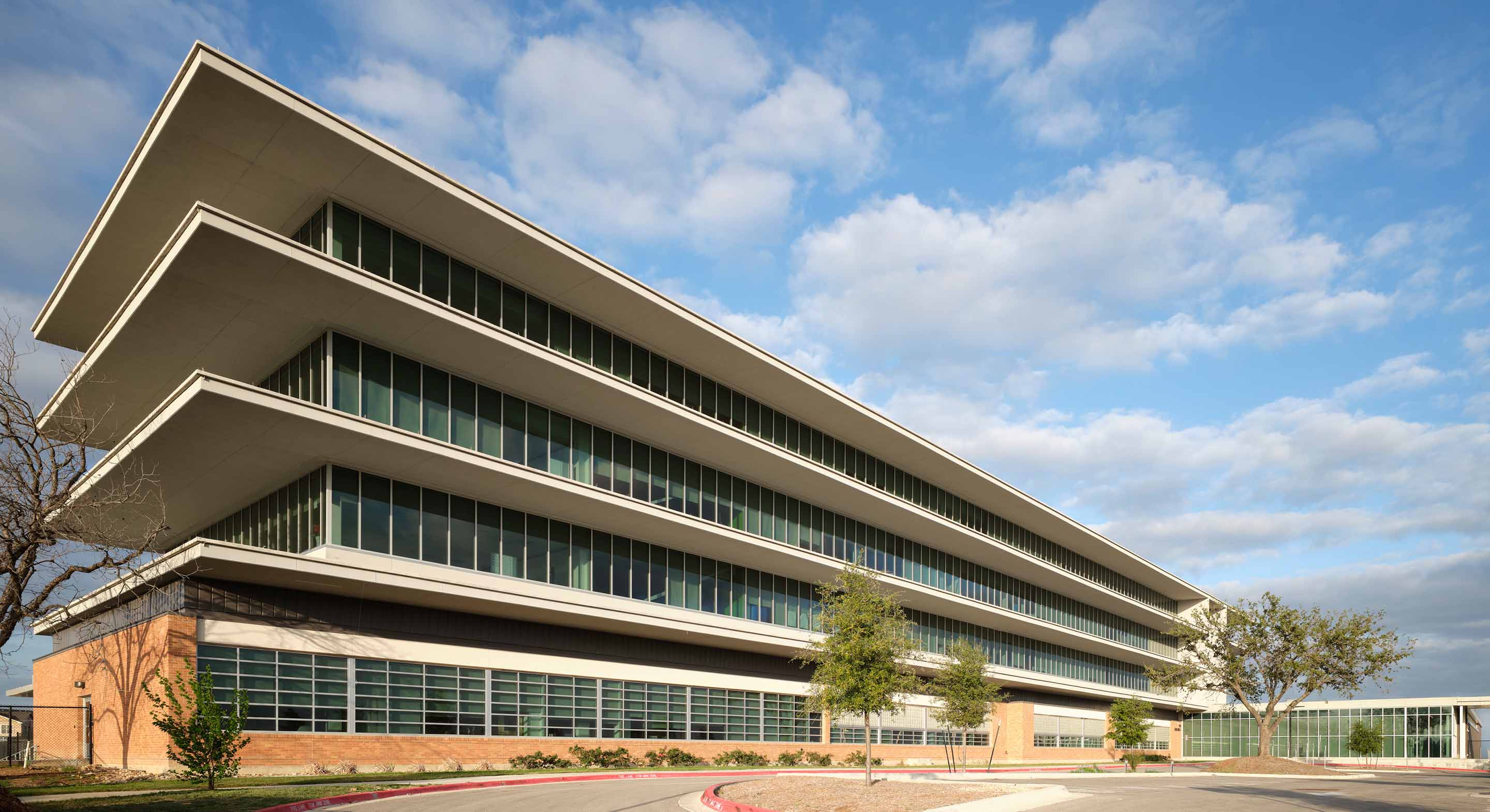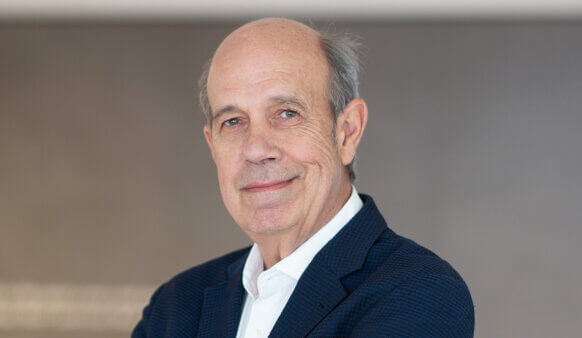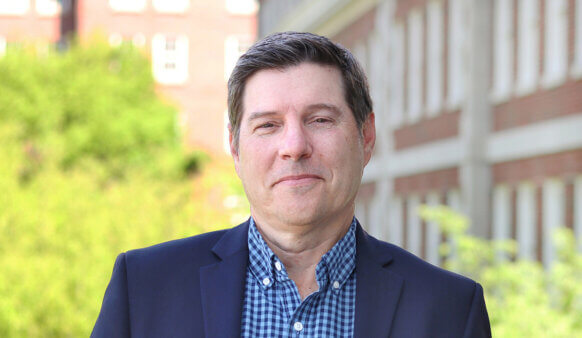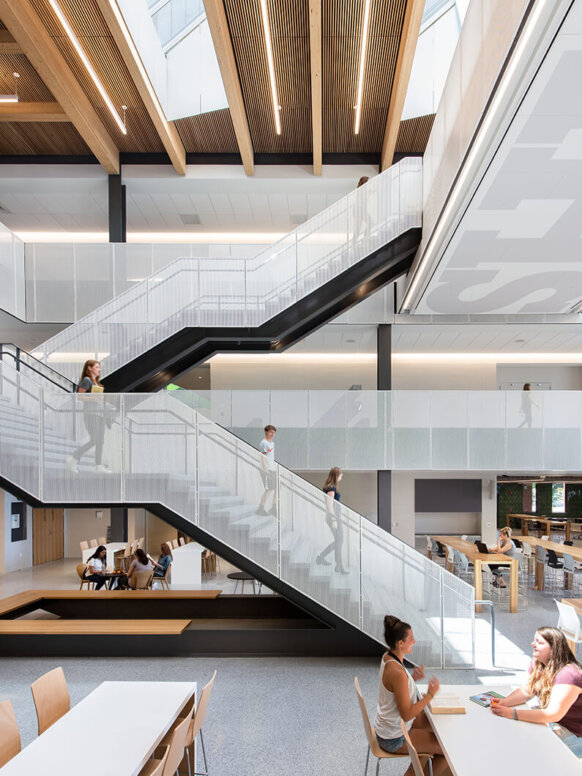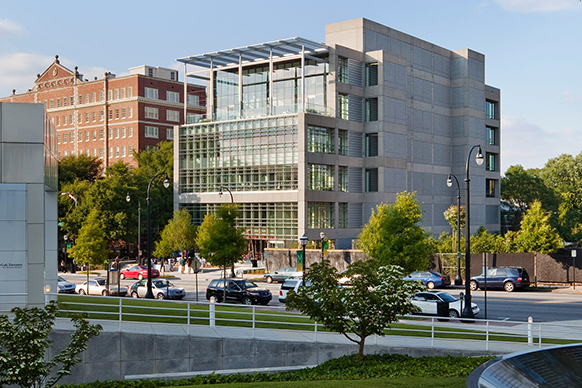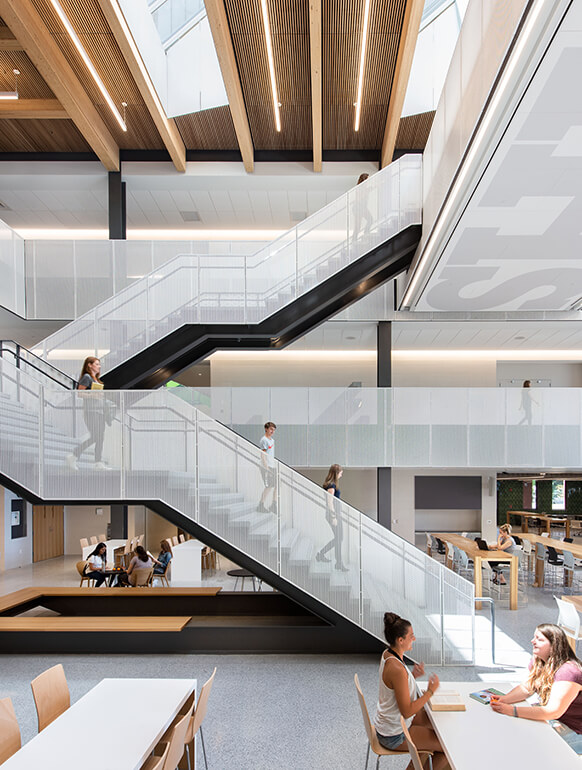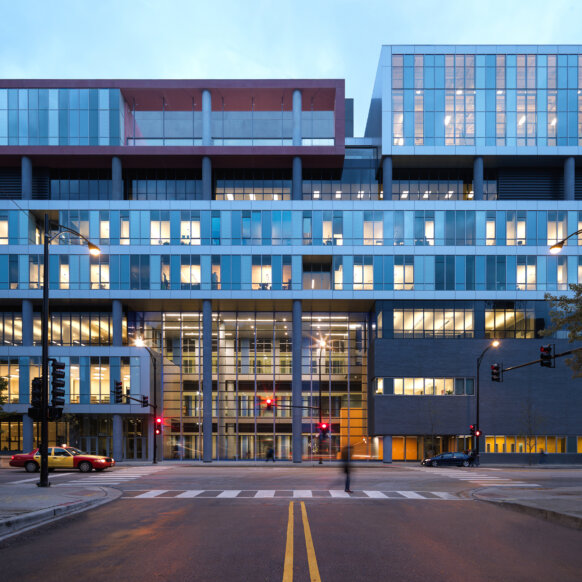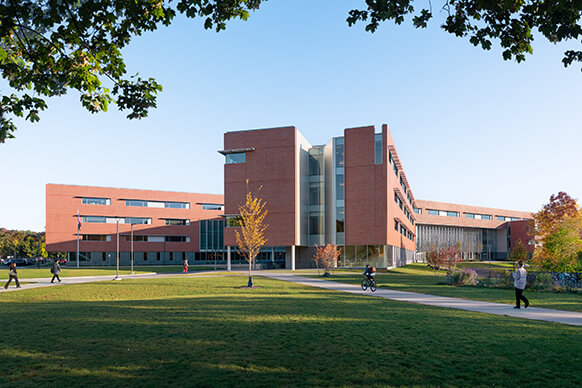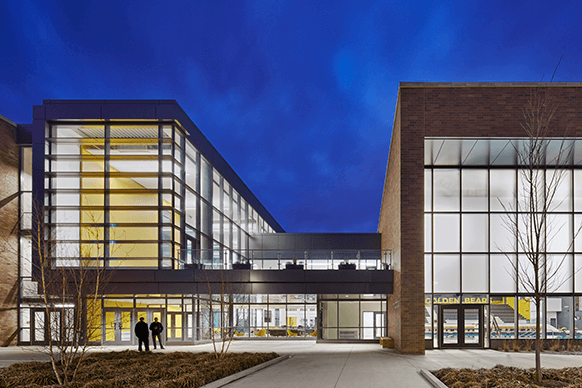
Eastside Early College High School
Our Austin studio worked with Austin ISD, Eastside Early College High School, and the alumni of the original L.C. Anderson High School to imagine a new high school that captures the history and culture of the Eastside while elevating a new opportunity for the Eastside Early College High School. L.C. Anderson High School was a nationally notorious African American high school that formed the heart of the eastside community until it was shuttered by the Supreme Court in 1971 to enforce desegregation. With a nod to the school’s legacy and historic significance, the design team reconstructed brick-by-brick parts of the existing building while expanding it into a four-story academic tower that overlooks the Austin skyline.
For its rigorous design solutions and revolutionary effect on a marginalized community, this project received the AIA Design Commendation Legacy Award.


In order to make a seamless transition between the past and present, the new construction builds on the low-profile aesthetic of the existing red-brick building while distinguishing itself from the original with modern lines achieved through the use of metal and glass building materials.

The physical environment brings together the past and the present by melding the historic materials and mid-century aesthetic with the openness of a contemporary learning environment.
The new academic tower rises above the city skyline as a landmark of the Eastside—a testament to the history of perseverance in the community.
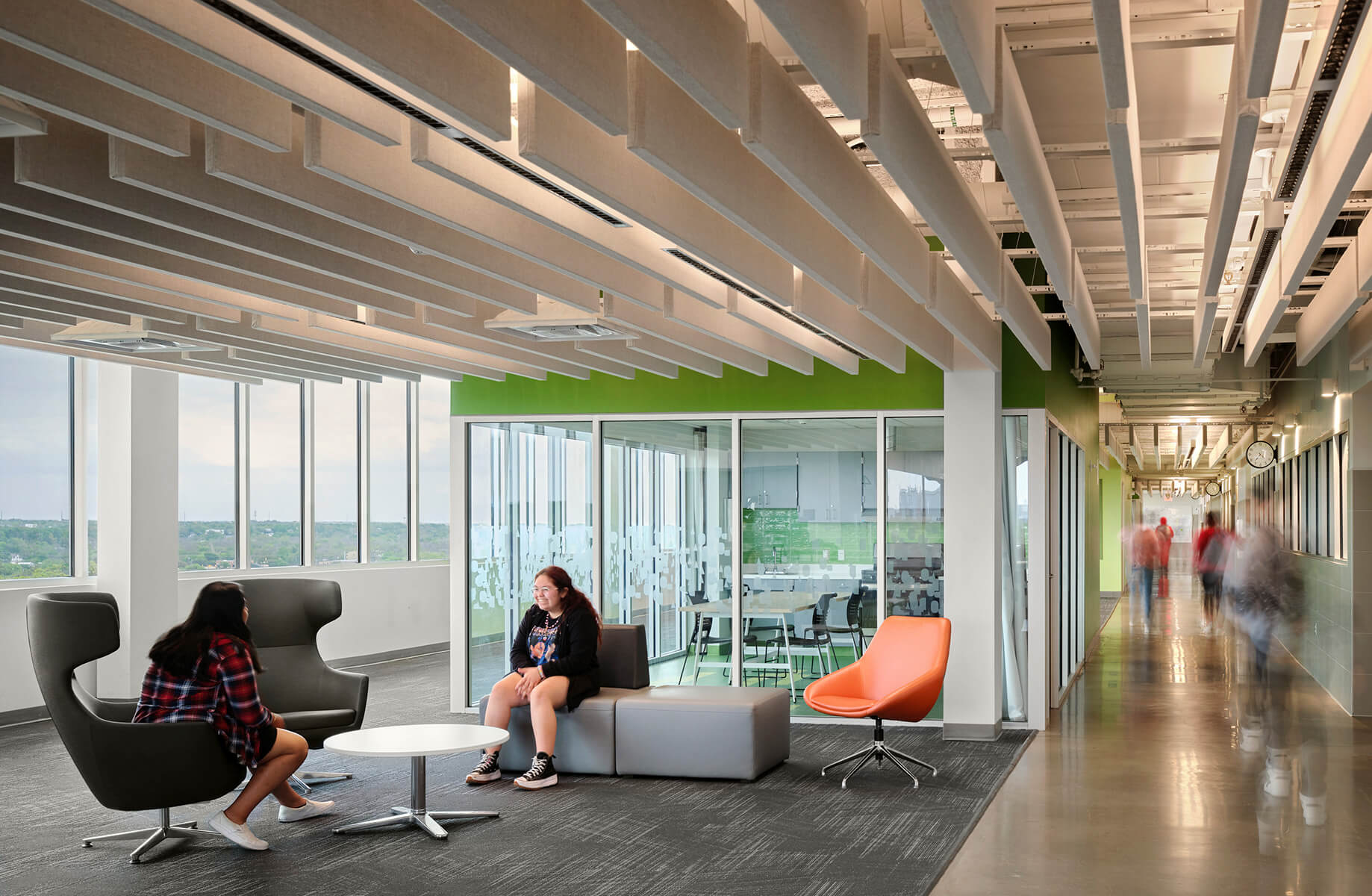
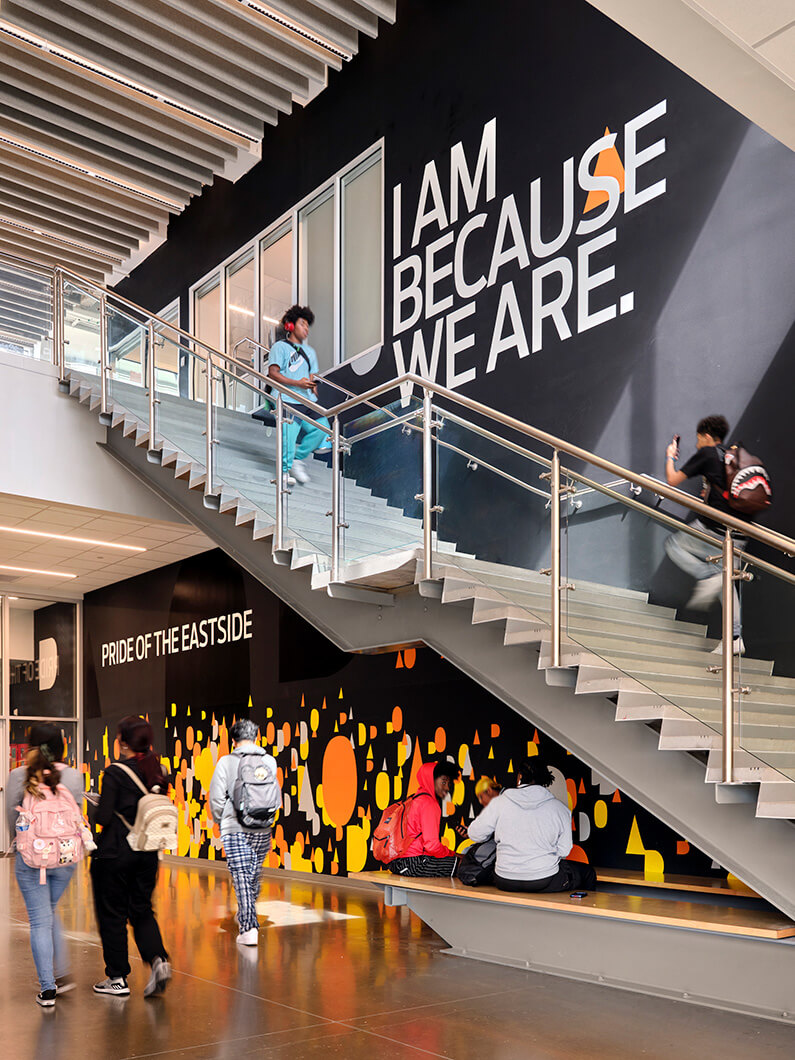
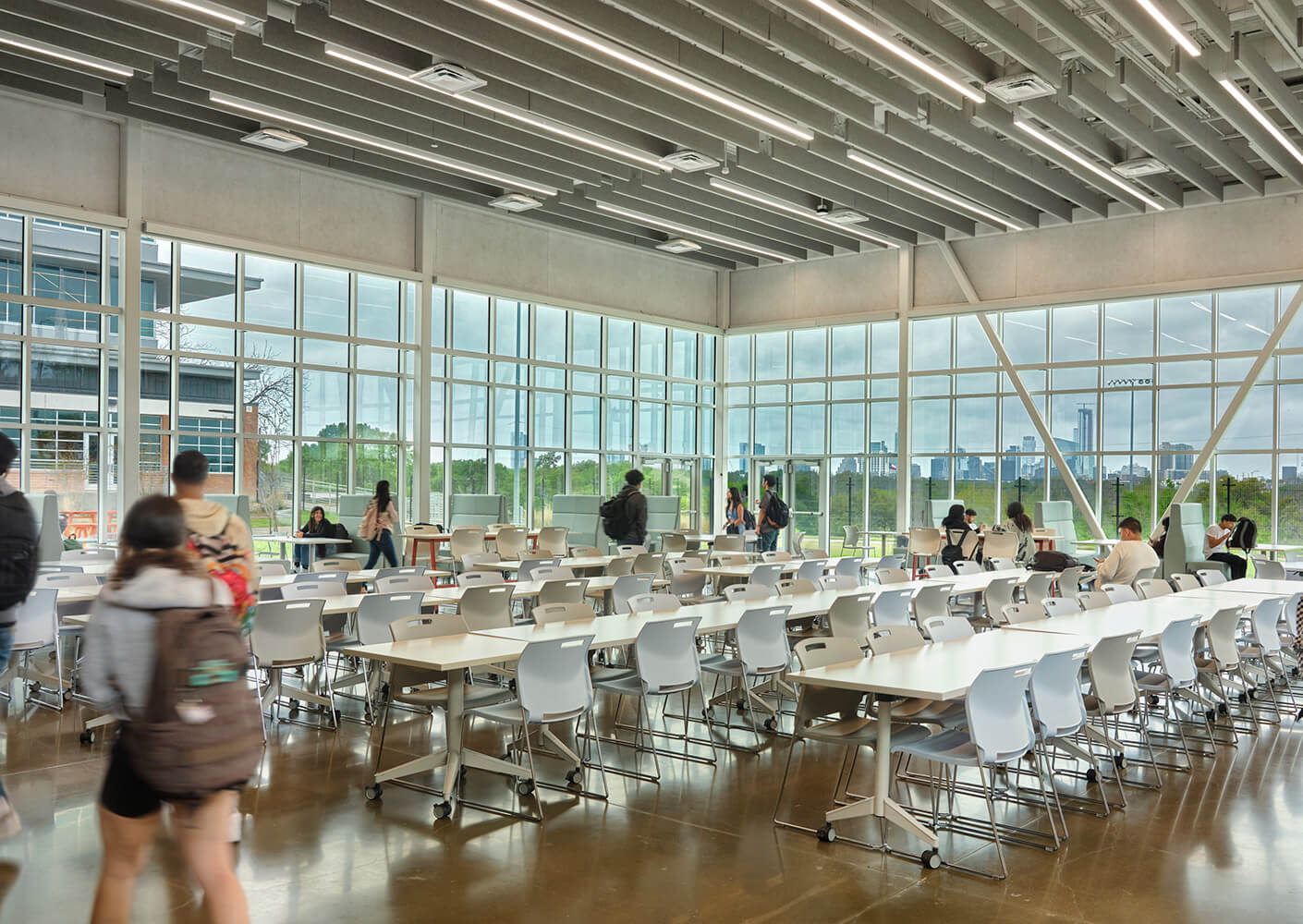
The Eastside Memorial Early College High School and International High School minimize its carbon footprint within the community through the use of passive heating and cooling with strategic design elements, utilizing natural daylighting, optimizing mechanical systems, reducing water usage within the building and on site, as well as having a convenient proximity to public transportation and bicycle routes.
Reuse of materials from the original L.C. Anderson High School, such as brick, wood flooring, glazed block, and other accents, not only enhanced our sustainability efforts but resonated with the community and its legacy.
